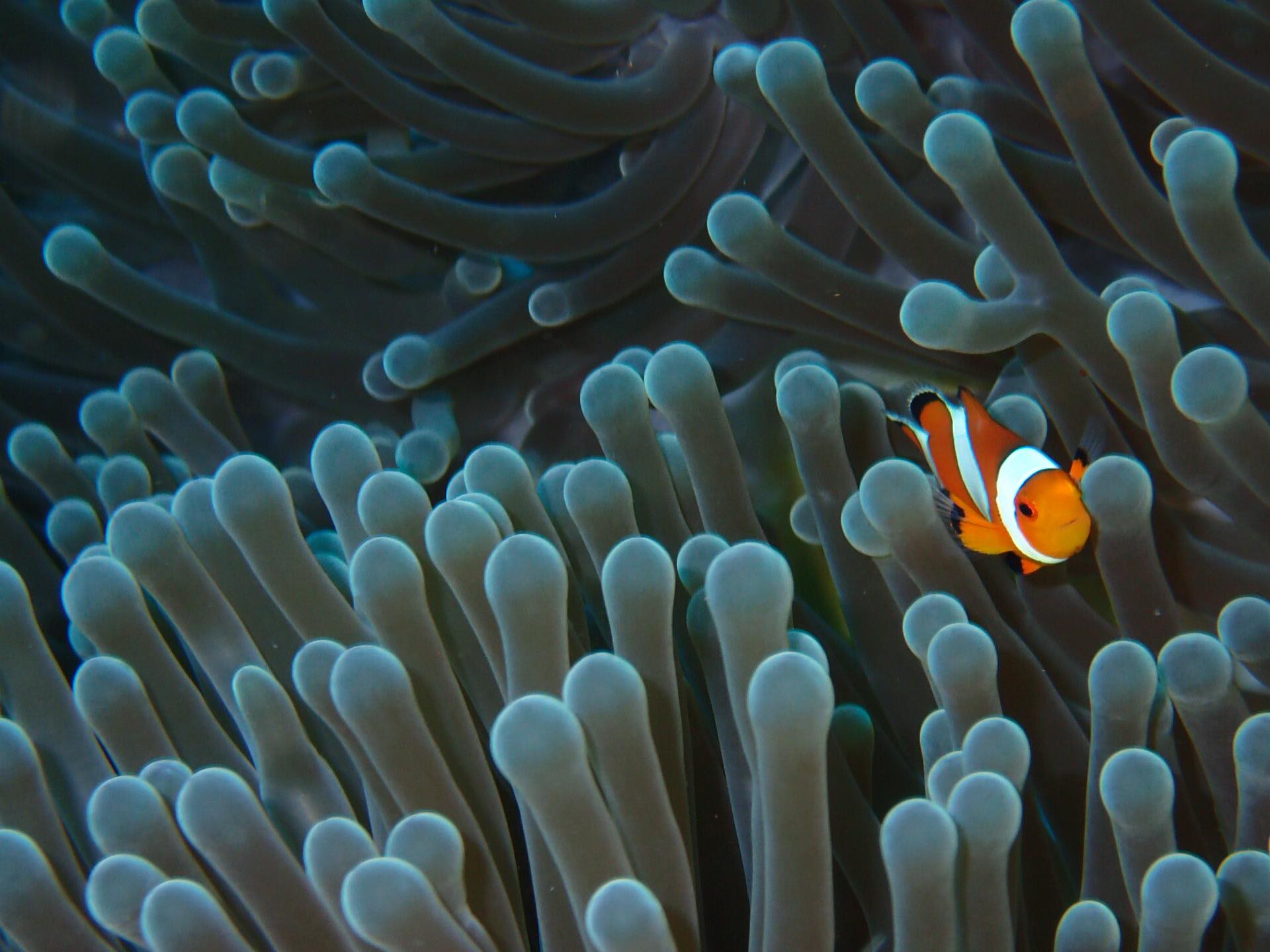...about Clownfish

Clownfish are one of the Scuba divers favourite fish as they are so colourful and also make for a stunning photo! There are 28 known species of Clownfish in the world. They are also referred to as Anemonefish, or False Anemonefish and were made famous from the Pixar Animation Studios movie ‘finding Nemo’. Luckily for us, they are not on the list on endangered species!
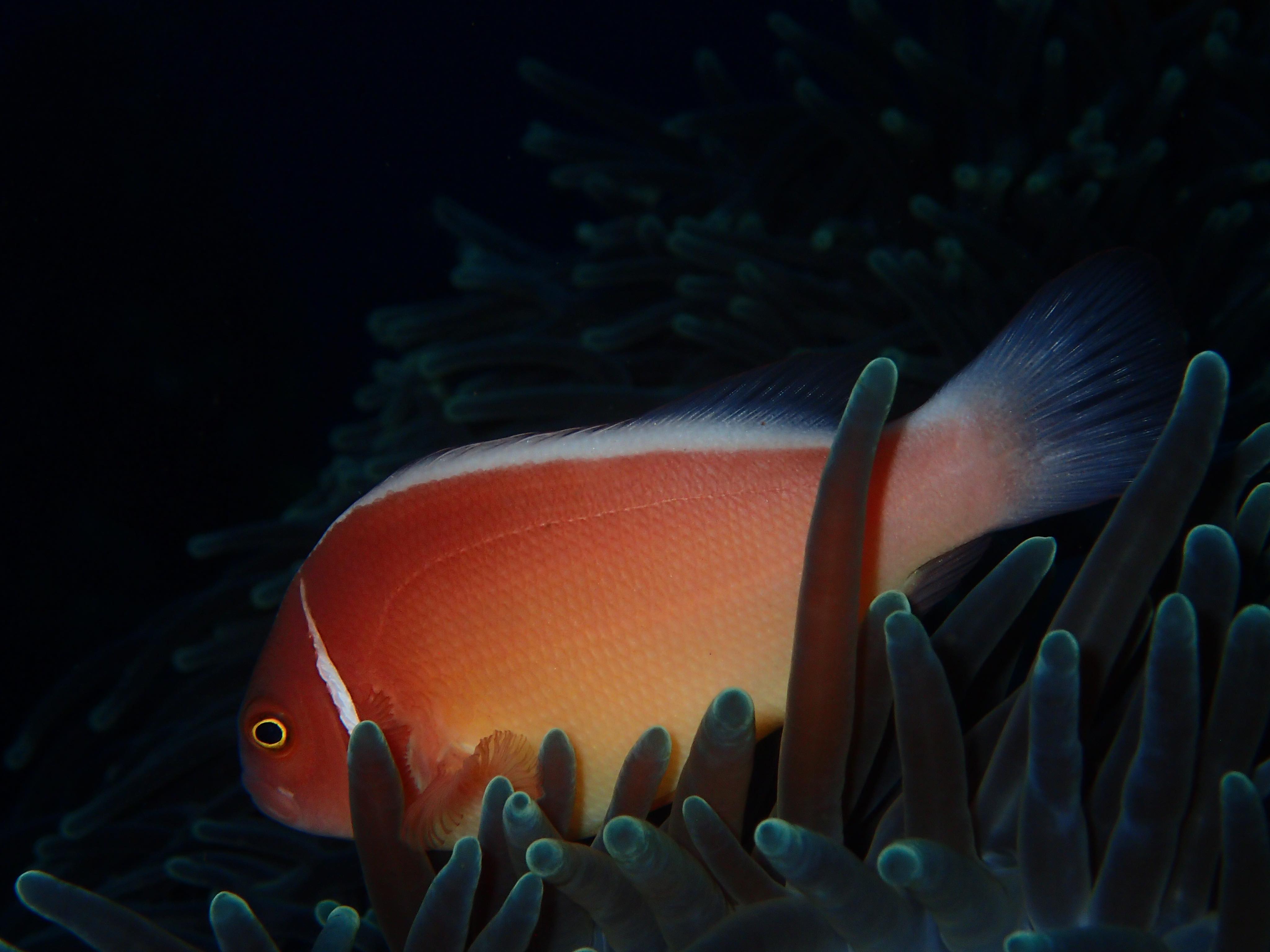
What is a Clownfish?
Clownfish are small reef fish which are normally between 5 and 12 cm long (2-5 inches). They are brightly coloured usually orange with three white stripes but this can vary between species. They also appear in pink, yellow, red, brown and black.
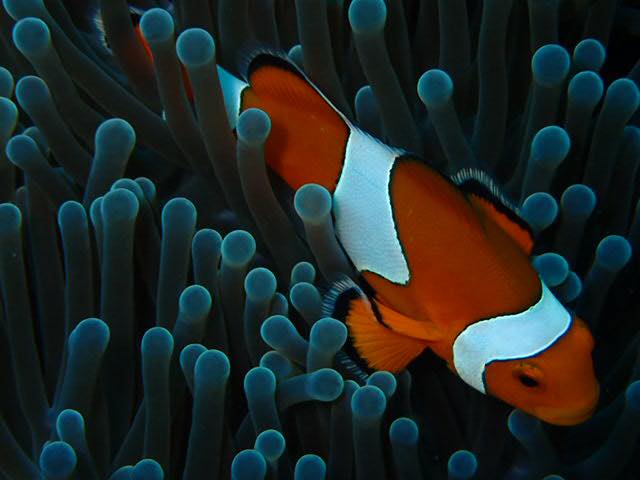
Where do they live?
They are mainly found around the Indian and Pacific Oceans, in warm waters and near coral reefs. They are also found in Australia and Japan. You will always find Clownfish living in a Sea Anemone (or very nearby) which is a bottom dwelling creature that they inhabit.
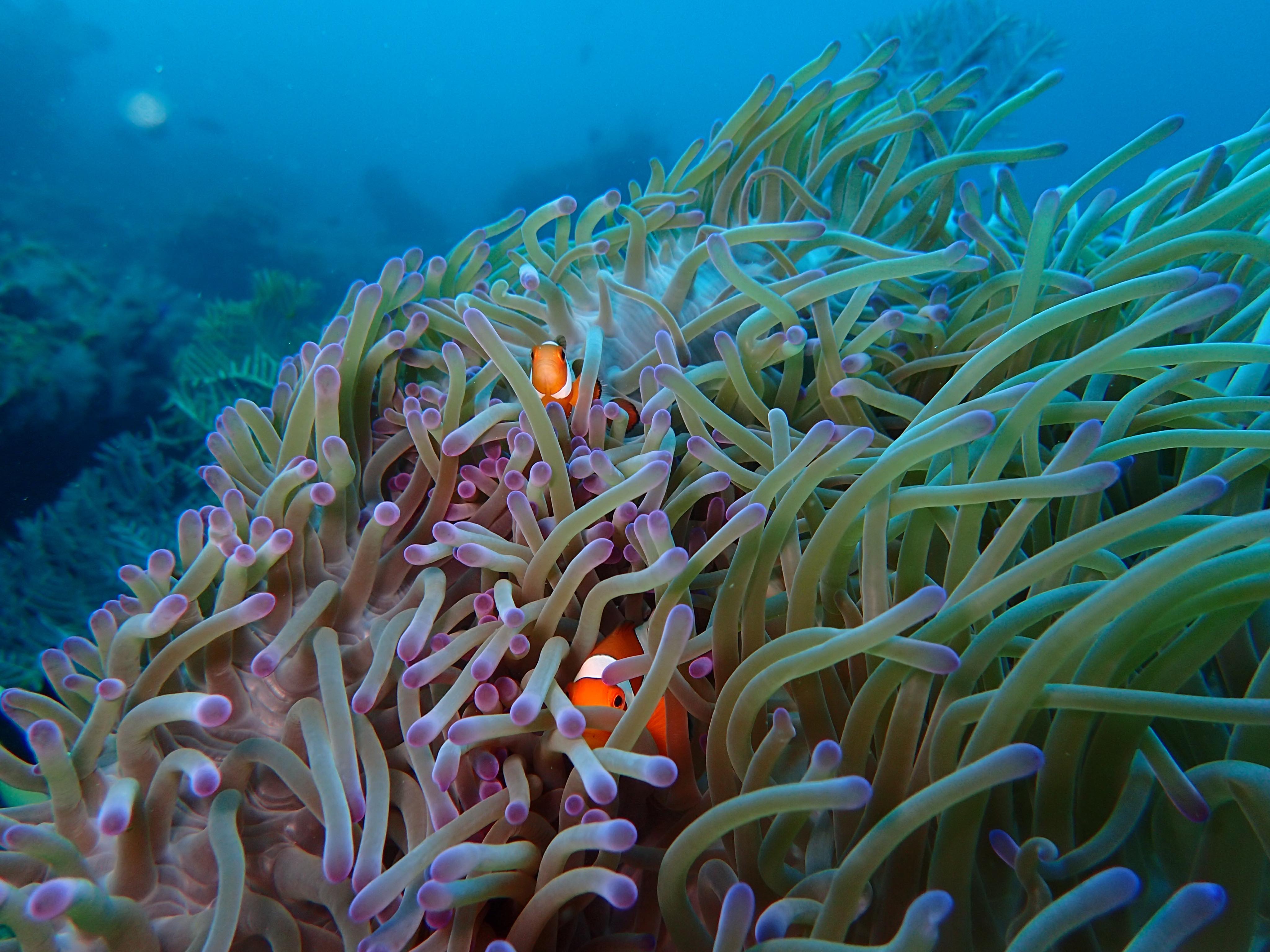
Why do Clown fish always live in anemones?
Of over 1,000 species of anemone in the world, the Clownfish is only able to live in 10 of them. Both the anemone and the Clownfish benefit from living together. The Clownfish eat the leftover food from the anemone, such as bits of fish. They also remove the dead tentacles from the anemone and help to increase the circulation of water around it. This helps to oxidise it and make more food available. The Clownfish uses the venomous tentacles of the anemone too, as protection from predators.

Why doesn't the Anemone sting them?
The Clownfish have immunity to the venom of the Anemone through a layer of mucus covering their bodies which protects them. For some species, they are born with this and with others, they develop this over time by slowly exposing certain areas of their body again and again to the tentacles to later build up this protective layer. Initially they will be stung but over time they become immune.
What do they eat?
Clownfish eat meat and plants. They will eat the leftover fish from the anemone and also the dead tentacles. They also eat different types of algae, small crustaceans and plankton.
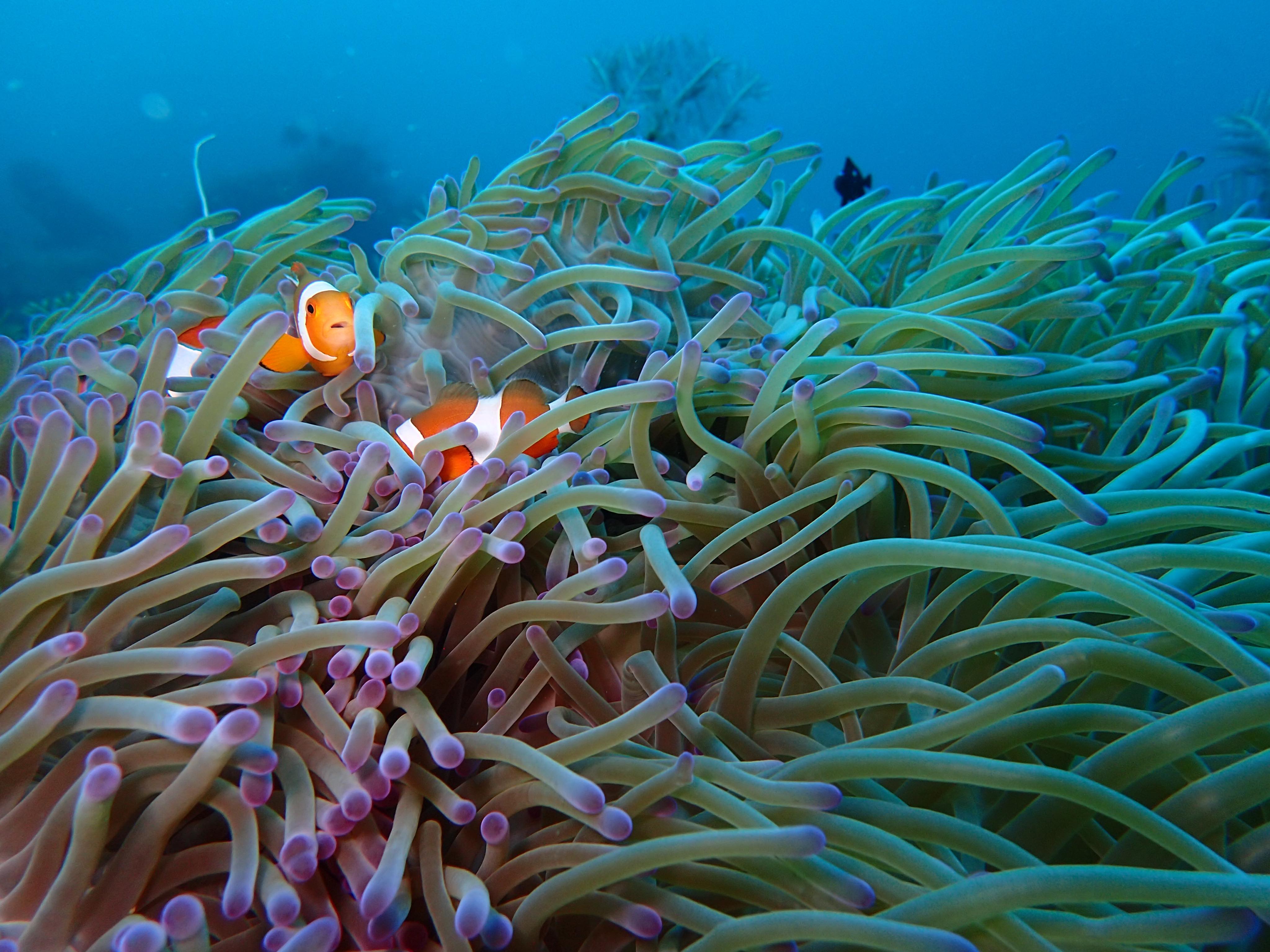
What eats Clownfish?
They are prayed on by larger fish such as eels and sharks.
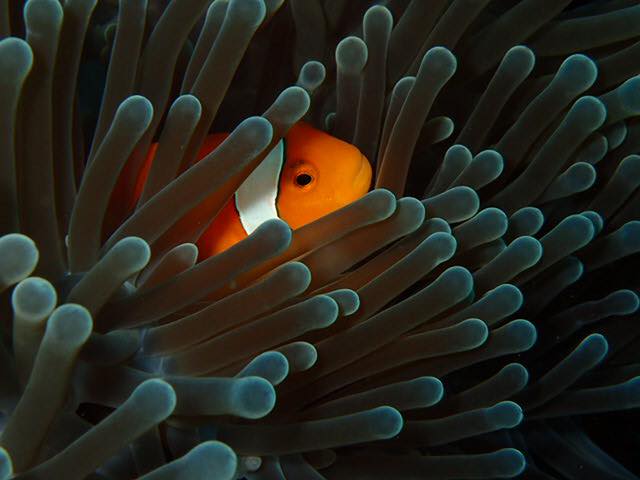
Their habitat.
Clownfish will live in small family groups. They consist of one female, and the rest are male. The female is the dominant fish of the group. Here is where is gets interesting…. if the female dies, the next largest, more dominant male will have a sex change into a female. He will then become the new leader of the group. Once they change into a female, they can’t change back into a male.
if the female clownfish dies, the next largest, more dominant male will have a sex change into a female.
By nature, they are very territorial and aggressive. If you get too close they will try to bite divers and other fish, especially if there are eggs involved. Another Interesting fact is that Clownfish can communicate with each other by making clicking and popping noises.

How do Clownfish mate?
They are hermaphrodites which means they they are born with both male and female sex organs. All Clownfish start their lives as males.
When they want to reproduce, it will be the males job to prepare an area near the anemone, either a stone or some drifting objects such as wood. He will clean the area and then proceed to court the female with a display of extended fins, chasing and sometimes biting. He will eventually chase her to the nest and then she will decide if it is ready for the spawn.
All Clownfish start their lives as males.
When she is happy with the area, she will lay a few hundred to a thousand eggs, depending on the species which are between three and four mm long. Fascinatingly, they only lay their eggs when there is a full moon! The male will then swim over the eggs, releasing sperm to fertilise them. The female will then leave the eggs and the male will do most of the baby sitting. He will keep the eggs oxidized, keep predators away and will eat any eggs which are damaged or infertile.
Fascinatingly, clownfish will only lay their eggs when there is a full moon!
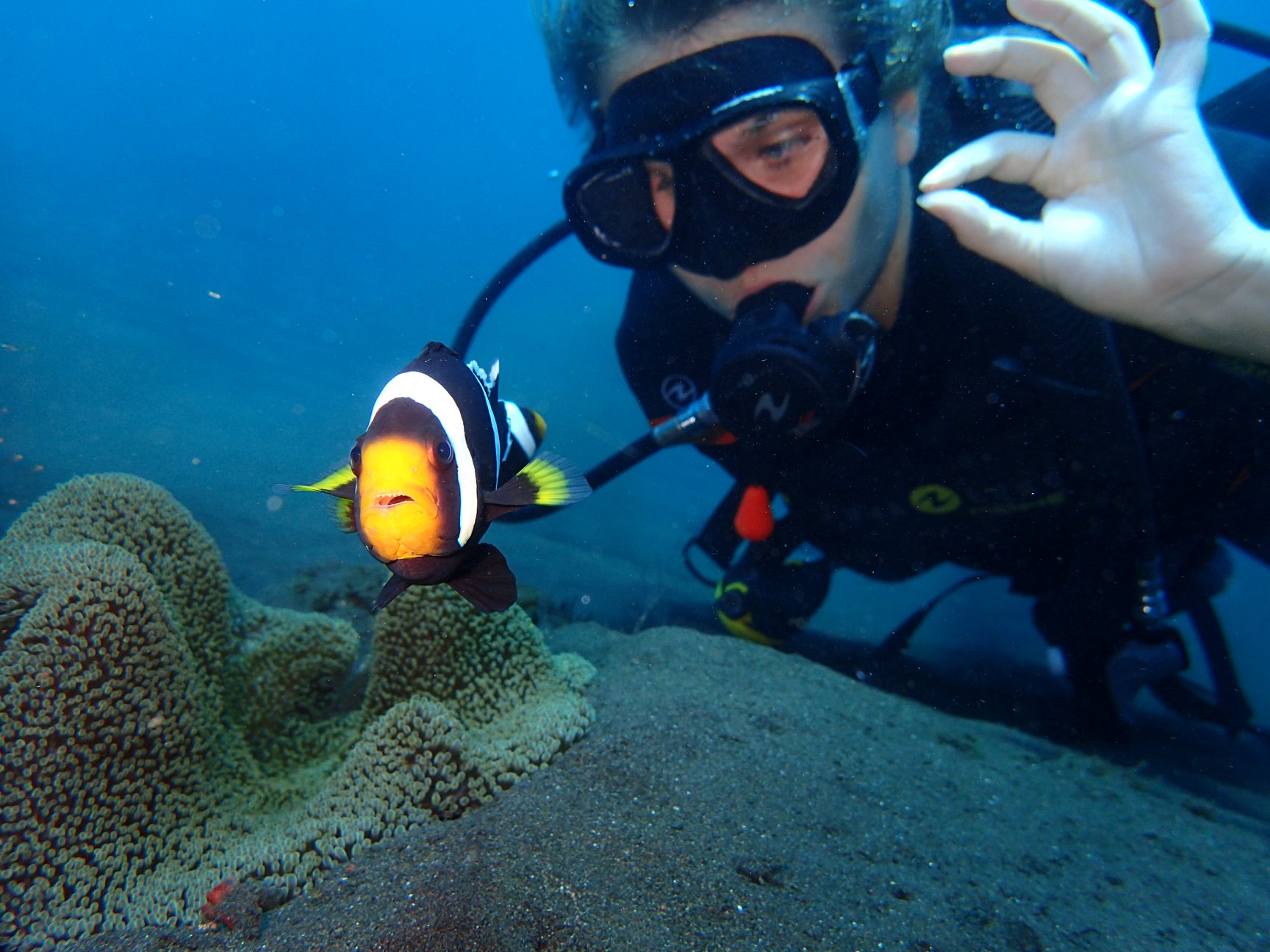
Journey of a baby Clownfish
The eggs will take between six and ten days to develop and will hatch a few hours after dusk, a huge number of eggs will be hatched. When they are born, they will be barley a centimetre long. They will float away and spend roughly ten days drifting. They will use the oceanic currents to migrate to new places, even travelling 250 miles or more!
At the beginning, they will be a clear or transparent and they will develop their famous bright colours as they grow. They will then settle to the reef floor and search for a host anemone. When they find one, they will stay inside the anemone until they are larger, when they will go out to find food. They normally don’t go further than a few meters from the anemone.
In the wild, Clownfish can live up 10 ten years!
